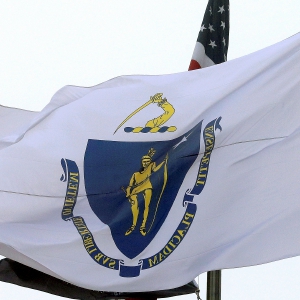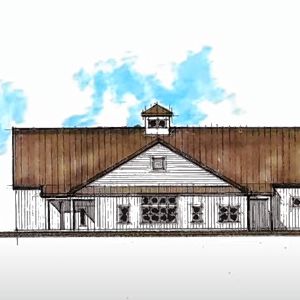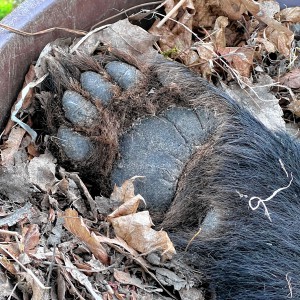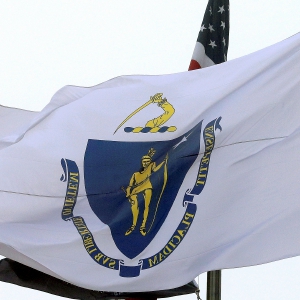Slimy underdogs: UMass researchers using new 3-D models to help chronicle, save frogs, amphibians from extinction
| Published: 05-10-2017 9:52 AM |
AMHERST — Earth is in the midst of a mass extinction of animal life, and the term “Anthropocene extinction” gives an obvious clue as to the cause: human activity.
Due to everything from habitat destruction to environmental degradation and climate change, the planet may lose a much as two-thirds of all wild animals by 2020, according to the World Wildlife Fund’s 2016 Living Planet Report.
Yet despite that frightening fact, the media rarely pick up on this grimmest of stories, and those who are screaming cautionary tales from the proverbial rooftops often say they are met with public indifference.
But with new technologies in hand, the Digital Life team at the University of Massachusetts Amherst is trying to change that apathy.
In what they say is the first attempt to use 3-D technology to preserve high-quality, accurate models of the planet’s endangered frog species, the UMass team has unveiled its “Frogs of the World” project — 15, 3-D models of frogs meant to get people to care about frog conservation.
Using a new photogrammetry rig created by undergraduate Trevor Mayhan, the UMass team is able to create high-resolution, virtual 3-D models of living creatures. Those digital models can also be 3-D printed into true-to-life physical replicas of species that may not be on the planet for much longer, providing educational and research opportunities as well as boosting conservation efforts
“A lot of conservation is about storytelling,” said Duncan Irschick, a UMass biology professor and director of the Digital Life project. And photography has long played a vital effort in telling those tales, bringing conservation efforts into the public consciousness.
“We really are running out of time, these animals really are going extinct and we need to capture them in time,” Irschick said.
Article continues after...
Yesterday's Most Read Articles
 Two men dump milk, orange juice over themselves at Amherst convenience store
Two men dump milk, orange juice over themselves at Amherst convenience store
 Three Amherst Regional Middle School counselors absolved of Title IX offenses
Three Amherst Regional Middle School counselors absolved of Title IX offenses
 Springfield man charged with murder in Holyoke stabbing
Springfield man charged with murder in Holyoke stabbing
 Lawmakers, Jewish groups accuse Massachusetts Teachers Association of bias
Lawmakers, Jewish groups accuse Massachusetts Teachers Association of bias
 ‘Our hearts were shattered’: Moved by their work in Mexico soup kitchen, Northampton couple takes action
‘Our hearts were shattered’: Moved by their work in Mexico soup kitchen, Northampton couple takes action
 Hadley’s Brad Mish, Northampton’s Elianna Shwayder top Hampshire County finishers at 128th Boston Marathon
Hadley’s Brad Mish, Northampton’s Elianna Shwayder top Hampshire County finishers at 128th Boston Marathon
For amphibians, whose sensitive skin makes them particularly vulnerable to changing environments, there really is no better time for this initiative than the present.
“This project helps highlight the slimier creatures that are kind of the underdogs in the conservation world,” said Mark Mandica, the executive director of the Amphibian Foundation, which collaborated with UMass on the project. “We can really showcase how unique and beautiful and diverse they are.”
Mandica first realized the extent of amphibian population decline when he started studying herpetology and amphibian biology as an undergrad at UMass Amherst. At first he was interested in non-conservation aspects of amphibian research, but that soon changed.
“Pretty soon it became obvious that this group of animals I love so much are disappearing,” he said.
In order to help others outside the scientific world understand the threats facing amphibians, high-quality models provide a unique opportunity, he said.
“This is some technology we can really use to document what’s really happening in the frog community,” Mandica said.
The team is of course under no illusion that the new models will somehow bring back animals that have already gone extinct. But species struggling for survival might receive much-needed attention as a result of the project, which UMass is running in collaboration with Zoo Atlanta, the Amphibian Foundation, the Oklahoma City Zoo and the University of Oklahoma.
“If you get people to care, people are very generous with their money, and that money can go to great causes,” Irschick said, adding that the models make the extinction crisis seem more real to people. “It shows people why we care, why we love these animals, why they’re worth preserving.”
The steep decline of amphibian populations is often seen as a bellwether of doom for other species, their vulnerabilities a warning to the ongoing threat to the planet’s biodiversity. But frogs are far from the only species that will be documented using the new technology.
In addition to the “Frogs of the World” project, Irschick and his team are currently crowdfunding $13,000 for a “Sea Turtles of the World” collection of models, documenting another species suffering dramatic population decline.
The one-of-a-kind camera has also previously been able to capture sharks, scorpions, flowers and other invertebrates. The ultimate goal would be to eventually document all of the world’s biodiversity.
Beyond the benefits that the 3-D models have on conservation efforts, they can also be used by educators and researchers.
“I’ve always felt that kids are our greatest weapon against amphibian declines,” Mandica said. “When you tell them these species are going extinct, they really care.”
When the 3-D models are printed, Mandica said it provides an opportunity to put amphibians directly into children’s hands without disturbing endangered populations, increasing awareness of human-caused extinction among younger generations.
The same can also be said about scientists, who can make use of the detailed and accurate models in their own research.
“I think it offers an incredible opportunity to describe biodiversity,” Irschick said.
Normally, new species are extracted from their natural habitat, killed and kept in a museum. Digital specimens, however, can be created using the new camera without necessarily having to excessively bother live animals.
Much of morphological research in biology involves the measuring of specimens, Mandica said, which means that the models can make that process easier. The models can also be used to study things like animal movement, Irschick added.
More than anything, the project will become a virtual library of the world’s great biodiversity.
“The main goal, we’re going to create a material that essentially will be given back to the public,” Irschick said.
The hope is that that library is able to help save many species, instead of becoming a repository of the biodiversity that once was.
Dusty Christensen can be reached at dchristensen@gazettenet.com.

 Flair and flavor: Couple draws on European, regional travel and food expertise to open gourmet Aster + Pine Market in Amherst
Flair and flavor: Couple draws on European, regional travel and food expertise to open gourmet Aster + Pine Market in Amherst Developer pitches new commercial building on Route 9 in Hadley
Developer pitches new commercial building on Route 9 in Hadley Holyoke man finds bear paw in his yard
Holyoke man finds bear paw in his yard Mass. saw nearly 200 percent rise in antisemitic incidents last year
Mass. saw nearly 200 percent rise in antisemitic incidents last year
